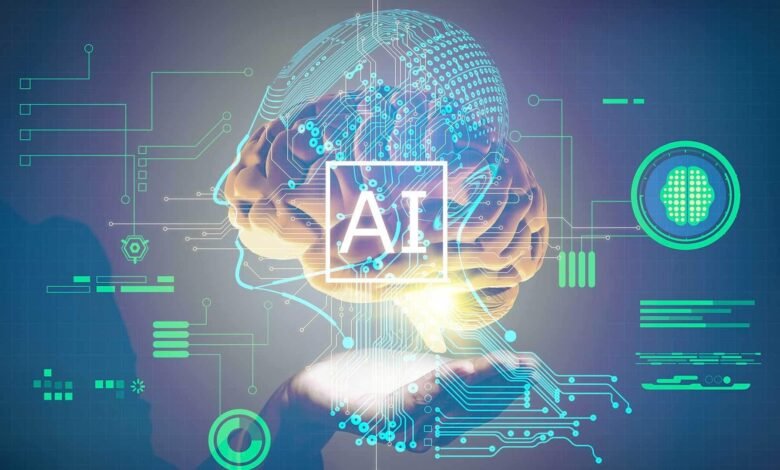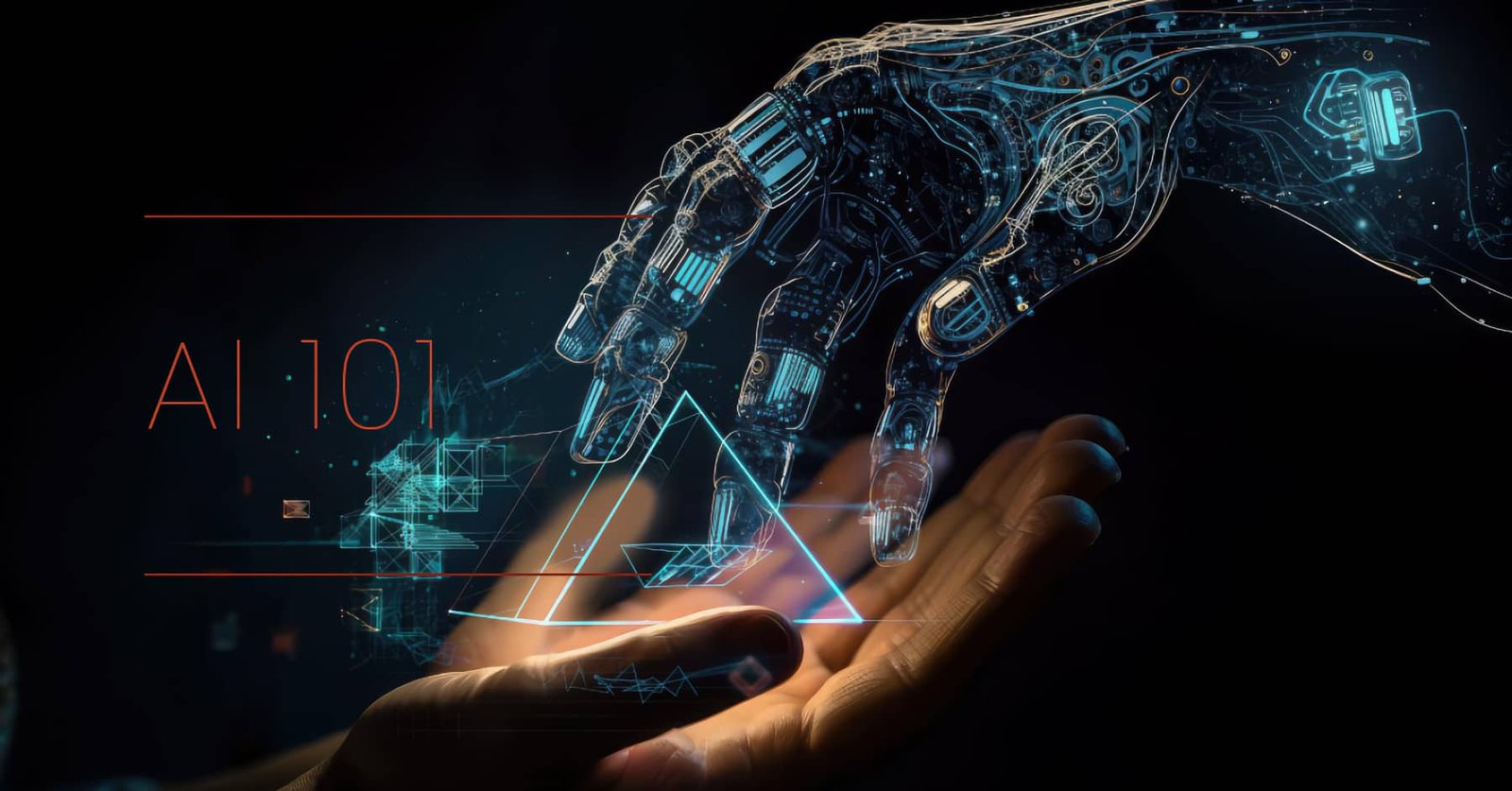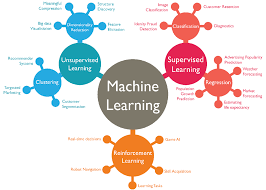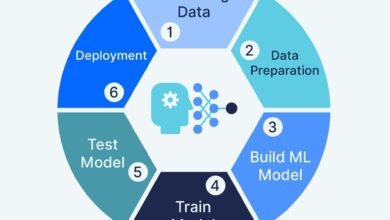
In today’s rapidly evolving digital landscape, artificial intelligence has transformed from a futuristic concept into an integral part of our daily lives. Whether you’re scrolling through personalized social media feeds, asking voice assistants for weather updates, or watching algorithm-driven content recommendations, AI technology surrounds you constantly. Understanding artificial intelligence is no longer optional for tech enthusiasts alone—it has become essential knowledge for professionals across all industries, students, entrepreneurs, and anyone curious about technology’s future.
This complete beginner’s guide to artificial intelligence demystifies the complex world of AI by breaking down fundamental concepts into digestible, easy-to-understand sections. If you’ve ever wondered how machines can recognize faces, understand human speech, or even generate creative content, this comprehensive guide will answer your questions. We’ll explore what AI truly means, examine its various types, understand how machine learning and deep learning work, and discover real-world applications transforming industries worldwide.
The importance of AI literacy cannot be overstated in 2025. Recent studies indicate that a significant majority of business leaders consider artificial intelligence knowledge crucial for their teams’ daily operations. From healthcare professionals using diagnostic AI tools to marketers leveraging predictive analytics, AI applications span every sector imaginable. Generative AI tools like ChatGPT, Midjourney, and Gemini have revolutionized how we work, create, and solve problems, making AI accessible to non-technical users for the first time.
Whether you’re looking to advance your career, understand emerging technologies, or simply satisfy your curiosity about how intelligent machines work, this guide provides everything you need to start your AI learning journey. You don’t need a computer science degree or advanced mathematics knowledge to grasp these concepts. We’ve designed this resource specifically for beginners, using clear explanations, practical examples, and a logical progression from basic to more advanced topics. By the end of this guide, you’ll have gained a solid foundation in artificial intelligence fundamentals, empowering you to engage confidently with AI technologies and understand their impact on our future.
What is Artificial Intelligence
Artificial intelligence refers to the simulation of human intelligence processes by computer systems and machines. At its core, AI enables machines to perform tasks that typically require human cognitive functions, including learning from experience, recognizing patterns, making decisions, understanding natural language, and solving complex problems. Unlike traditional computer programs that follow explicit instructions, AI systems can adapt, improve, and make autonomous decisions based on data analysis.
The concept of artificial intelligence emerged in the 1950s when computer scientists began exploring whether machines could think like humans. Today, AI technology has evolved far beyond those early theoretical discussions into practical applications that impact billions of people daily. When you use smartphone facial recognition to unlock your device, receive personalized product recommendations while shopping online, or interact with chatbots for customer service, you’re experiencing AI in action.
Artificial intelligence operates through several key technologies and methodologies. Machine learning forms the backbone of most modern AI applications, allowing systems to learn from data without being explicitly programmed for every scenario. Neural networks, inspired by the human brain’s structure, enable machines to process information in layers, identifying increasingly complex patterns. Natural language processing (NLP) gives machines the ability to understand, interpret, and generate human language, powering everything from translation services to voice assistants.
The scope of AI applications continues to expand rapidly. In healthcare, artificial intelligence assists doctors in diagnosing diseases, analyzing medical images, and predicting patient outcomes. Financial institutions employ AI algorithms to detect fraud, assess credit risk, and automate trading decisions. Manufacturing companies use AI-powered robots for quality control and production optimization. Transportation systems leverage AI for autonomous vehicles and traffic management. Entertainment platforms utilize AI to curate personalized content recommendations, keeping users engaged with precisely tailored suggestions.
Types of Artificial Intelligence
Understanding the different types of artificial intelligence helps clarify what current AI systems can accomplish and what remains in the realm of future possibilities. Researchers and practitioners categorize AI in multiple ways, most commonly distinguishing between capability levels and functionality approaches.
Narrow AI (Weak AI)
Narrow AI, also known as weak AI, represents the vast majority of artificial intelligence systems currently in use. These specialized AI systems excel at performing specific, well-defined tasks but cannot transfer their knowledge or capabilities to other domains. When you interact with AI chatbots, use image recognition software, or rely on speech recognition systems, you’re engaging with narrow AI applications.
Examples of narrow AI surround us daily. Digital voice assistants like Siri, Alexa, and Google Assistant use narrow AI to understand voice commands and provide relevant responses. Search engines employ AI algorithms to deliver personalized results based on your query and browsing history. Autonomous vehicles utilize narrow AI for navigation, obstacle detection, and decision-making on roads. Recommendation systems on streaming platforms analyze your viewing habits to suggest content you’ll likely enjoy. Email spam filters use machine learning to identify and block unwanted messages automatically.
Despite their impressive capabilities within specific domains, narrow AI systems have significant limitations. A chess-playing AI cannot suddenly start diagnosing diseases or writing poetry. An image recognition system trained to identify cats cannot spontaneously learn to recognize musical genres. This specialization represents both the strength and constraint of current artificial intelligence technology.
General AI (Strong AI)
General AI, or strong AI, refers to artificial intelligence systems with human-like cognitive abilities across diverse tasks and domains. These theoretical systems would possess genuine understanding, consciousness, and the ability to apply knowledge flexibly across different contexts—much like human intelligence operates. General AI could learn new skills, reason about abstract concepts, and adapt to entirely novel situations without specific training.
Currently, general AI remains aspirational rather than actual. No existing AI system demonstrates true general intelligence comparable to human cognitive flexibility. While narrow AI achieves superhuman performance in specific tasks, even the most advanced AI technologies lack the broad understanding, common sense reasoning, and contextual awareness that humans apply effortlessly across countless situations.
Researchers debate whether general AI represents an achievable goal or remains perpetually beyond reach. Some experts predict artificial general intelligence (AGI) may emerge within decades through advances in neural networks, computational power, and algorithmic breakthroughs. Others argue that human-level general intelligence requires consciousness, emotional understanding, and embodied experience that machines cannot replicate. Regardless of these debates, pursuing general AI research continues to drive important innovations in machine learning, cognitive science, and computer architecture.
Super AI
Super AI represents a hypothetical form of artificial intelligence that surpasses human intelligence across all domains, including creativity, problem-solving, emotional intelligence, and general wisdom. This theoretical concept, often featured in science fiction, envisions machines capable of self-improvement, recursive enhancement, and intelligence exponentially exceeding human capacities.
Currently, super AI exists purely as speculation and philosophical consideration. Scientists and ethicists discuss super AI primarily within the contexts of long-term AI safety research and existential risk analysis. Questions surrounding how humanity would control superintelligent systems, ensure alignment with human values, and prevent potentially catastrophic outcomes drive important safety research in artificial intelligence development.
How Does Artificial Intelligence Work

Understanding how AI functions requires exploring the core technologies and methodologies that enable machines to exhibit intelligent behavior. While artificial intelligence systems vary in complexity and approach, most modern AI applications rely on fundamental principles of machine learning, data processing, and algorithmic decision-making.
Machine Learning Fundamentals
Machine learning represents the primary engine driving contemporary artificial intelligence. Rather than manually programming rules for every possible scenario, machine learning enables systems to learn patterns and make decisions from data. This approach revolutionized AI development by allowing computers to improve performance automatically through experience, mimicking how humans learn from repeated exposure to information.
Machine learning algorithms identify patterns within datasets, extracting meaningful insights that inform predictions and decisions. The learning process involves feeding large quantities of data into AI models, which adjust internal parameters to minimize errors and maximize accuracy. As models process more data, they refine their understanding, improving performance without human intervention.
Three main categories define machine learning approaches: supervised learning, unsupervised learning, and reinforcement learning. Supervised learning trains models using labeled datasets where correct answers are provided, allowing the AI to learn relationships between inputs and outputs. Unsupervised learning discovers hidden patterns in unlabeled data without predetermined categories or outcomes. Reinforcement learning trains AI agents through trial and error, rewarding desired behaviors and penalizing mistakes to optimize decision-making strategies.
Deep Learning and Neural Networks
Deep learning, a powerful subset of machine learning, has driven many recent breakthrough achievements in artificial intelligence. This approach utilizes artificial neural networks—computational models inspired by the human brain’s structure and function. Neural networks consist of interconnected layers of nodes or neurons that process information collaboratively, identifying increasingly complex patterns as data flows through successive layers.
Deep neural networks contain multiple hidden layers between input and output, enabling them to learn hierarchical representations of data. Early layers might detect simple features like edges in images, while deeper layers recognize complex patterns like facial features or entire objects. This layered architecture allows deep learning models to handle tasks previously impossible for traditional AI algorithms, including advanced image recognition, natural language understanding, and sophisticated pattern detection.
Training deep learning models requires substantial computational resources and massive datasets. Neural networks adjust billions of parameters through a process called backpropagation, which calculates how each parameter contributes to errors and updates values accordingly. Modern AI systems leverage specialized hardware like graphics processing units (GPUs) and tensor processing units (TPUs) to accelerate the intensive calculations required for deep learning.
Popular deep learning architectures serve different purposes within artificial intelligence applications. Convolutional Neural Networks (CNNs) excel at image recognition and computer vision tasks, automatically detecting visual patterns without manual feature engineering. Recurrent Neural Networks (RNNs) and their advanced variants like Long Short-Term Memory (LSTM) networks process sequential data, making them ideal for language processing and time-series prediction. Transformer architectures, powering modern generative AI models like GPT, have revolutionized natural language processing through attention mechanisms that capture long-range dependencies in text.
Natural Language Processing
Natural language processing (NLP) enables machines to understand, interpret, and generate human language, bridging the communication gap between humans and computers. This critical AI technology powers voice assistants, translation services, sentiment analysis tools, and AI chatbots that understand contextual meaning beyond simple keyword matching.
NLP systems tackle numerous challenges inherent in human language, including ambiguity, context dependence, idioms, and cultural nuances. Advanced NLP models use deep learning to capture semantic relationships, grammatical structures, and pragmatic meanings within text and speech. Recent generative AI breakthroughs demonstrate unprecedented language understanding, enabling AI systems to engage in coherent conversations, write creative content, and answer complex questions with human-like fluency.
Computer Vision
Computer vision empowers machines to interpret and understand visual information from the world, mimicking human visual perception through AI algorithms. This technology enables applications ranging from facial recognition and medical image analysis to autonomous navigation and quality inspection in manufacturing.
Computer vision systems process images and videos by extracting meaningful features, identifying objects, detecting patterns, and understanding spatial relationships. Deep learning revolutionized this field through convolutional neural networks, which automatically learn visual representations from raw pixel data. Modern computer vision achieves superhuman accuracy in specific tasks like identifying skin cancer in dermoscopic images or detecting manufacturing defects invisible to human inspectors.
Key Applications of Artificial Intelligence
Artificial intelligence applications have permeated virtually every industry, transforming how businesses operate, how professionals work, and how consumers interact with technology. Understanding these practical implementations illustrates AI’s tangible impact beyond theoretical concepts.
Healthcare and Medical AI
Healthcare represents one of the most promising frontiers for artificial intelligence implementation. AI-powered diagnostic tools analyze medical images like X-rays, MRIs, and CT scans with remarkable accuracy, often detecting abnormalities that human radiologists might miss. Machine learning models predict patient outcomes, identify high-risk individuals, and recommend personalized treatment plans based on genetic profiles, medical history, and clinical data.
AI systems accelerate drug discovery by analyzing molecular structures, predicting protein interactions, and identifying potential therapeutic compounds exponentially faster than traditional methods. Virtual health assistants powered by AI provide preliminary medical guidance, schedule appointments, and monitor patient conditions remotely. Surgical robots augmented with artificial intelligence perform precise procedures with minimal invasiveness, improving patient outcomes and recovery times.
Financial Services and FinTech
Financial institutions leverage artificial intelligence extensively for fraud detection, risk assessment, algorithmic trading, and personalized financial planning. Machine learning algorithms analyze transaction patterns in real-time, flagging suspicious activities that deviate from normal behavior and preventing fraudulent transactions before they complete.
AI-powered credit scoring models evaluate loan applications more accurately than traditional methods by analyzing diverse data sources beyond credit history, including employment patterns, transaction behaviors, and social indicators. Robo-advisors use AI algorithms to provide automated investment management, creating diversified portfolios tailored to individual risk tolerance and financial goals. Trading firms employ artificial intelligence for high-frequency trading, market prediction, and portfolio optimization based on complex pattern recognition.
E-commerce and Retail
Online retailers harness artificial intelligence to deliver personalized shopping experiences, optimize inventory management, and enhance customer service. AI-powered recommendation systems analyze browsing history, purchase patterns, and demographic information to suggest products customers are likely to buy, significantly increasing conversion rates and customer satisfaction.
Chatbots equipped with natural language processing handle customer inquiries 24/7, resolving common issues instantly without human intervention. Computer vision technology enables visual search capabilities, allowing customers to find products by uploading photos rather than typing keywords. Dynamic pricing algorithms powered by AI adjust prices in real-time based on demand, competition, and inventory levels, maximizing revenue while remaining competitive.
Transportation and Autonomous Vehicles
Autonomous vehicles represent one of the most visible and ambitious applications of artificial intelligence. Self-driving cars combine multiple AI technologies—including computer vision, sensor fusion, machine learning, and real-time decision-making—to navigate roads safely without human drivers.
AI systems in autonomous vehicles process data from cameras, radar, lidar, and other sensors to detect pedestrians, vehicles, traffic signs, and road conditions. Deep learning models predict the behavior of other road users, planning optimal routes while avoiding obstacles and adhering to traffic rules. Beyond personal transportation, AI-powered logistics systems optimize delivery routes, reduce fuel consumption, and improve fleet management efficiency for shipping companies.
Entertainment and Content Creation
Entertainment platforms utilize artificial intelligence extensively for content recommendation, creation, and personalization. Streaming services like Netflix, Spotify, and YouTube employ sophisticated AI algorithms that analyze viewing and listening patterns to suggest content matching individual preferences, keeping users engaged longer.
Generative AI tools are revolutionizing creative industries by assisting with content production. AI-powered image generators create artwork, graphics, and designs based on text descriptions. Music composition AI generates original soundtracks and melodies. Video editing software enhanced with artificial intelligence automates tedious tasks like color correction, audio synchronization, and scene transitions. Natural language generation assists writers with drafting content, suggesting improvements, and overcoming creative blocks.
Manufacturing and Industry 4.0
Manufacturing sectors implement artificial intelligence for predictive maintenance, quality control, supply chain optimization, and process automation. AI-powered sensors monitor equipment conditions continuously, predicting failures before they occur and scheduling maintenance proactively to minimize downtime.
Computer vision systems inspect products on assembly lines at speeds impossible for human inspectors, identifying defects with higher accuracy and consistency. Machine learning models optimize production schedules, balancing resource allocation, energy consumption, and output targets dynamically. Collaborative robots (cobots) enhanced with AI work alongside human workers safely, adapting to changing tasks and learning from demonstrations.
Getting Started with AI: Learning Pathways
Embarking on your artificial intelligence learning journey requires understanding foundational concepts, selecting appropriate resources, and gaining hands-on experience with AI tools and technologies. Whether you aspire to become an AI developer, understand AI for business applications, or simply expand your technical knowledge, structured learning pathways help you progress efficiently.
Essential Prerequisites
While artificial intelligence may seem intimidating initially, beginners can start learning without extensive technical backgrounds. However, certain foundational knowledge areas facilitate deeper understanding as you progress. Basic programming skills, particularly in Python—the predominant language for AI development—provide essential tools for implementing machine learning models and experimenting with AI algorithms.
Mathematical foundations in linear algebra, calculus, statistics, and probability theory underpin machine learning and deep learning concepts. Understanding matrices, vectors, derivatives, and probability distributions helps you grasp how AI algorithms process data and optimize parameters. Don’t let mathematics intimidate you—many excellent resources explain these concepts intuitively for AI applications without requiring advanced mathematical expertise.
Online Learning Resources
Numerous high-quality online platforms offer structured AI courses suitable for beginners. Coursera, edX, and Udacity provide comprehensive artificial intelligence specializations taught by university professors and industry experts. Google AI Essentials and similar free courses introduce fundamental concepts without requiring prior technical experience.
Interactive coding platforms like DataCamp and Kaggle offer hands-on learning through practical exercises and competitions. YouTube channels dedicated to AI education provide video tutorials explaining concepts visually. Following AI blogs, research papers, and industry publications keeps you updated on the latest developments and emerging trends in artificial intelligence technology.
Practical Projects and Experimentation
Hands-on experience accelerates AI learning significantly. Start with simple projects using pre-trained machine learning models before building custom solutions from scratch. Implement a basic image classifier using available datasets, create a sentiment analysis tool for social media posts, or develop a simple chatbot using natural language processing libraries.
Popular AI frameworks like TensorFlow, PyTorch, and scikit-learn provide accessible tools for beginners. These libraries offer pre-built functions, extensive documentation, and active communities supporting newcomers. Cloud platforms like Google Colab provide free computational resources, eliminating the need for expensive hardware when starting your AI projects.
Joining AI Communities
Engaging with AI communities provides valuable support, networking opportunities, and knowledge sharing. Online forums like Reddit’s r/MachineLearning, Stack Overflow, and specialized Discord servers connect beginners with experienced practitioners willing to answer questions and provide guidance.
Attending AI meetups, webinars, and conferences—both virtual and in-person—exposes you to cutting-edge research, practical applications, and career opportunities. Contributing to open-source AI projects on GitHub develops your skills while building a portfolio demonstrating your capabilities to potential employers or collaborators.
Ethical Considerations and AI Challenges

As artificial intelligence becomes increasingly powerful and pervasive, addressing ethical implications and technical challenges grows crucial. Responsible AI development and deployment require careful consideration of potential risks, biases, privacy concerns, and societal impacts.
Bias and Fairness in AI Systems
AI systems learn from data reflecting existing human biases, potentially perpetuating or amplifying discrimination. Machine learning models trained on biased datasets may produce unfair outcomes in critical applications like hiring, loan approvals, criminal justice, and healthcare. Addressing bias requires diverse development teams, careful dataset curation, rigorous testing across demographic groups, and ongoing monitoring of deployed systems.
Privacy and Data Security
Artificial intelligence applications require vast amounts of data, raising significant privacy concerns. Balancing the benefits of AI-powered personalization with individual privacy rights presents ongoing challenges. Implementing strong data protection measures, anonymization techniques, and transparent data usage policies helps build trust while enabling beneficial AI applications.
Transparency and Explainability
Many advanced AI models, particularly deep learning systems, operate as “black boxes” where decision-making processes remain opaque even to their creators. This lack of transparency creates problems in high-stakes domains where understanding the reasoning behind AI decisions is crucial. Developing explainable AI (XAI) methods that provide interpretable justifications for model predictions represents an important research direction.
Job Displacement and Economic Impact
Artificial intelligence automation raises legitimate concerns about workforce displacement as machines increasingly perform tasks previously requiring human labor. While AI creates new job categories and opportunities, the transition period may cause economic disruption for workers whose skills become obsolete. Addressing these challenges requires proactive policies supporting retraining programs, education reform, and economic safety nets.
AI Safety and Control
As AI systems grow more capable, ensuring they remain aligned with human values and controllable becomes paramount. Questions about how to specify complex human values formally, prevent unintended consequences, and maintain oversight of increasingly autonomous systems drive important AI safety research. Developing robust governance frameworks and international cooperation on AI regulation helps maximize benefits while mitigating risks.
The Future of Artificial Intelligence
Artificial intelligence continues evolving rapidly, with emerging technologies and research directions promising even more transformative capabilities. Understanding likely future developments helps prepare for upcoming changes and opportunities in the AI landscape.
Advances in Generative AI
Generative AI represents one of the most exciting frontiers, with models creating increasingly sophisticated text, images, music, videos, and code. Future generative AI systems will likely achieve even greater realism, creativity, and usefulness, transforming creative industries, education, and professional workflows. Multimodal models that seamlessly integrate text, images, audio, and video promise richer, more intuitive human-computer interactions.
AI in Scientific Discovery
Artificial intelligence accelerates scientific research across disciplines, from materials science and drug discovery to climate modeling and astrophysics. AI systems identify patterns in complex data that human researchers might miss, generate novel hypotheses, design experiments, and synthesize knowledge across vast literature databases. Future AI-powered scientific tools may fundamentally change how we conduct research and make discoveries.
Edge AI and IoT Integration
Moving AI processing from cloud servers to edge devices—smartphones, wearables, autonomous vehicles, and IoT sensors—enables faster responses, enhanced privacy, and reduced bandwidth requirements. Edge AI technologies allow sophisticated machine learning models to run locally on resource-constrained devices, enabling new applications in healthcare monitoring, smart cities, and industrial automation.
Quantum AI
Quantum computing promises exponential speedups for certain computational tasks, potentially revolutionizing AI by enabling the training of vastly larger neural networks or solving optimization problems intractable for classical computers. While practical quantum AI applications remain largely prospects, research at the intersection of quantum computing and artificial intelligence explores fascinating possibilities.
More Read: Latest Breakthroughs in Artificial Intelligence Technology
Conclusion
Artificial intelligence has transitioned from science fiction to everyday reality, fundamentally reshaping how we live, work, and interact with technology. This complete beginner’s guide has explored AI fundamentals, from basic definitions and types to core technologies like machine learning, deep learning, and neural networks, alongside practical applications across industries. Understanding artificial intelligence empowers you to navigate our increasingly AI-driven world confidently, whether you’re pursuing a career in technology, seeking to leverage AI tools professionally, or simply staying informed about transformative innovations.
The journey into AI is ongoing—technology evolves rapidly, breakthroughs emerge constantly, and opportunities for learning and application continue expanding. By grasping these foundational concepts and remaining curious about developments, you’ve taken the crucial first step toward AI literacy in our digital age. As artificial intelligence continues advancing, those who understand its capabilities, limitations, and implications will be best positioned to harness its potential while thoughtfully addressing associated challenges and ethical considerations for a beneficial AI-powered future.











